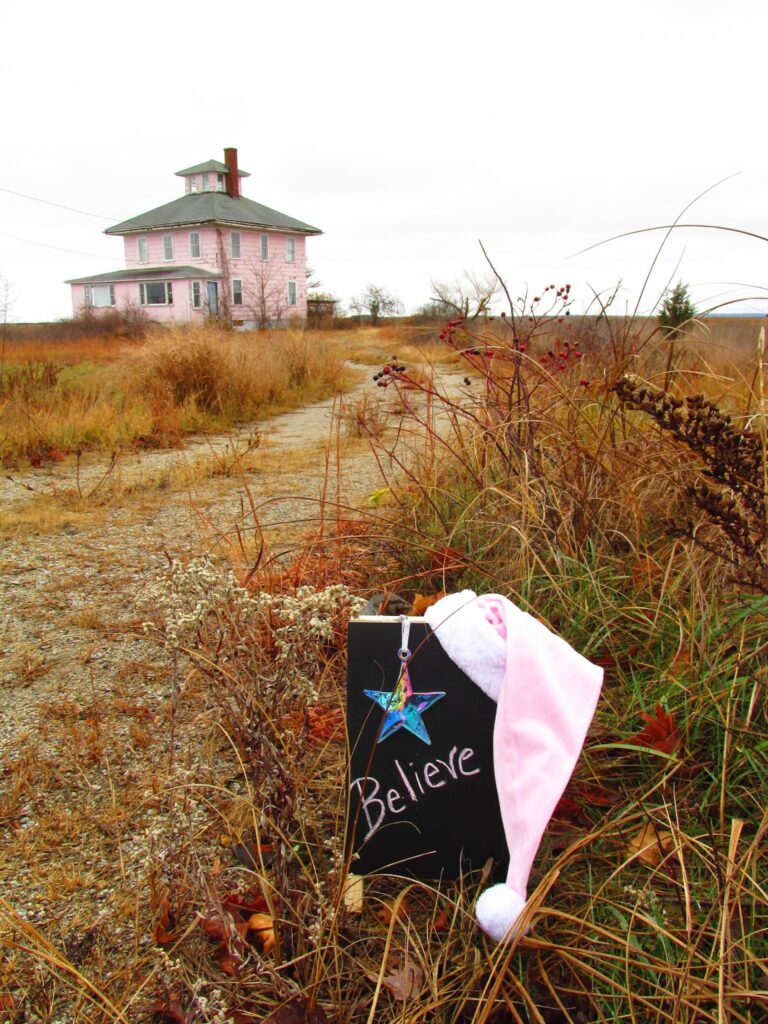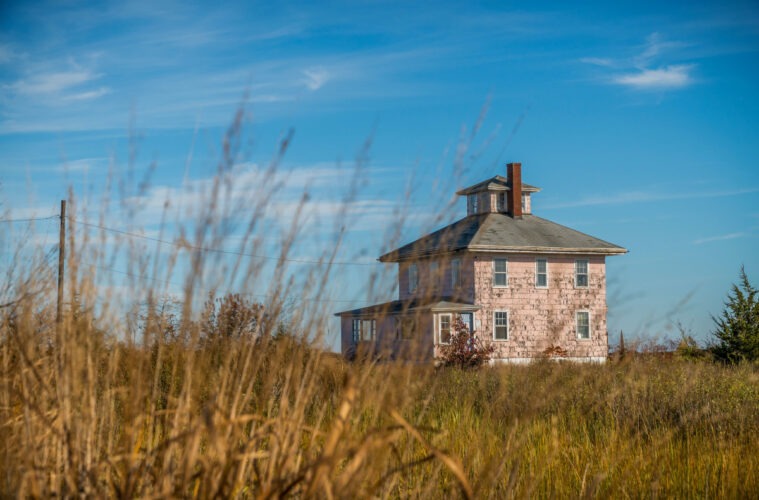For nearly a hundred years, the building has stood alone surrounded by marshland, an icon on Plum Island Turnpike. Subject of legends, curiosity, and countless photographs and paintings, it has been pink for as long as anyone can remember.
But the Pink House, originally built in 1925, may have reached the end of the road. On Nov. 1, the National Fish and Wildlife Service, which manages Parker River, took a major step toward the possible demolition of the house. The agency announced a public comment period for an environmental assessment that includes a proposal to demolish the building this winter, restore the marshlands, and perhaps build an accessible viewing platform.
The news was devastating to members of Support The Pink House, a fully volunteer-run 501(c)(3) non-profit that has been working for eight years to preserve the building. The organization’s two active Facebook pages together have more than 5,000 members.
“The Pink House means so much to the community,” says Sandy Tilton, who serves on the board of Support the Pink House (SPH). “For 100 years, it has been a landmark. Maybe not officially, but officially in the hearts of the people who pass by it all the time.”
Juliette Loring, who lived in the house for nearly 20 years, starting when she was in kindergarten, says the house was that rosy hue when her family bought it, and they kept painting it the same color. “I understand the romance of the location better than anyone,” says Loring, whose family sold the house to the Parker River National Wildlife Refuge in Newbury in 2011.
Falling into disrepair
Surrounded by delicate salt marsh, the building has been decaying for years, as vandals, black mold, and raccoons take their toll. SPH has tried to negotiate with the National Fish and Wildlife Service to transfer the property to someone who can preserve it, but that’s not easy – government regulations mean that the service cannot just sell the property. Instead, the organization must swap the parcel for something of equal or greater ecological value – and roughly the same monetary value.
“For almost eight years, we’ve tried to find a local landowner with salt marsh lands [to trade], because we care about salt marsh sparrows and the health and the resilience of the area,” says refuge manager Matt Hillman, who admits that while this spot has many merits, the fact that is has been developed makes it less desirable than other possible areas in terms of protecting wildlife.

They’ve searched as far afield as Pennsylvania, yet no one has come forward with a viable option for a land exchange. “I think we’ve exhausted all of our options,” he says. “We’ve gone above and beyond to do everything that we can to find someone who can maintain that property, and that person just doesn’t seem to exist.”
The search has been frustrating for SPH members, who have invested thousands of dollars and countless volunteer hours in a number of possible solutions over the years, all of which have fallen through. And as winter approaches, activists fear that time is running out for the building, which is in a desperate state. “We can’t go through yet another winter – the house is not being well maintained enough,” says board president Rochelle Joseph. “It is salvageable and still structurally sound. …We have had licensed builders offer to donate materials and waive their liability to fortify it at no cost to [the Fish and Wildlife service, but] they turned us all down through the years.”
Searching for solutions
Hillman agrees that the building is deteriorating, with vandals kicking in the doors and breaking windows, and a hole in the roof that was patched just a few months ago. “We’re having to do increasingly intensive efforts just to keep the house standing,” he says. But refuge can’t accept outside assistance – despite offers to waive liability, the risk is just too high. “It’s really not a structure where I would be willing to have volunteers, with or without our staff, go inside and do work. I think there’s some serious environmental health concerns associated with it.”
So maintenance of the Pink House is just one of countless tasks Parker River’s single maintenance person is juggling, along with ensuring that the roads aren’t riddled with potholes and patching the refuge headquarters’ roof when it leaks. “We need three maintenance workers, and because of the way federal budgets are just now, we have only one,” Hillman says, noting that the areas that are open to the public must take precedence.
Hillman’s hope is that some new solution will present itself during the public comment period, which extends through the month of November. “The best outcome is maybe this gets a lot of news traction, and through that, there’s a person who hadn’t heard about it who steps forward and says, ‘I think I have your solution,’ ” Hillman says, adding, “The comments that are most helpful are ones that suggest an alternative, or say, ‘Hey, I happen to know somebody who wants that house, and he or she has 500 acres that they’re willing to exchange for it.’ “
While Hillman doesn’t hold a lot of hope at this point, if a solution appears this month, that could change the trajectory of the demolition plan. “If someone does come forward, and we can do this quickly, that would be a win-win situation,” Hillman says. “Then everybody walks away happy, and that’s always been our goal. That’s why we’ve been at this for eight years, because it would be great for the community and for the Pink House group. And it would be a really big win for wildlife, because we could [add] higher-value wildlife lands to the refuge system.”
To read the draft assessment or submit a public comment, visit fws.gov/refuge/parker-river.
What do you think? Should the Pink House be saved?

